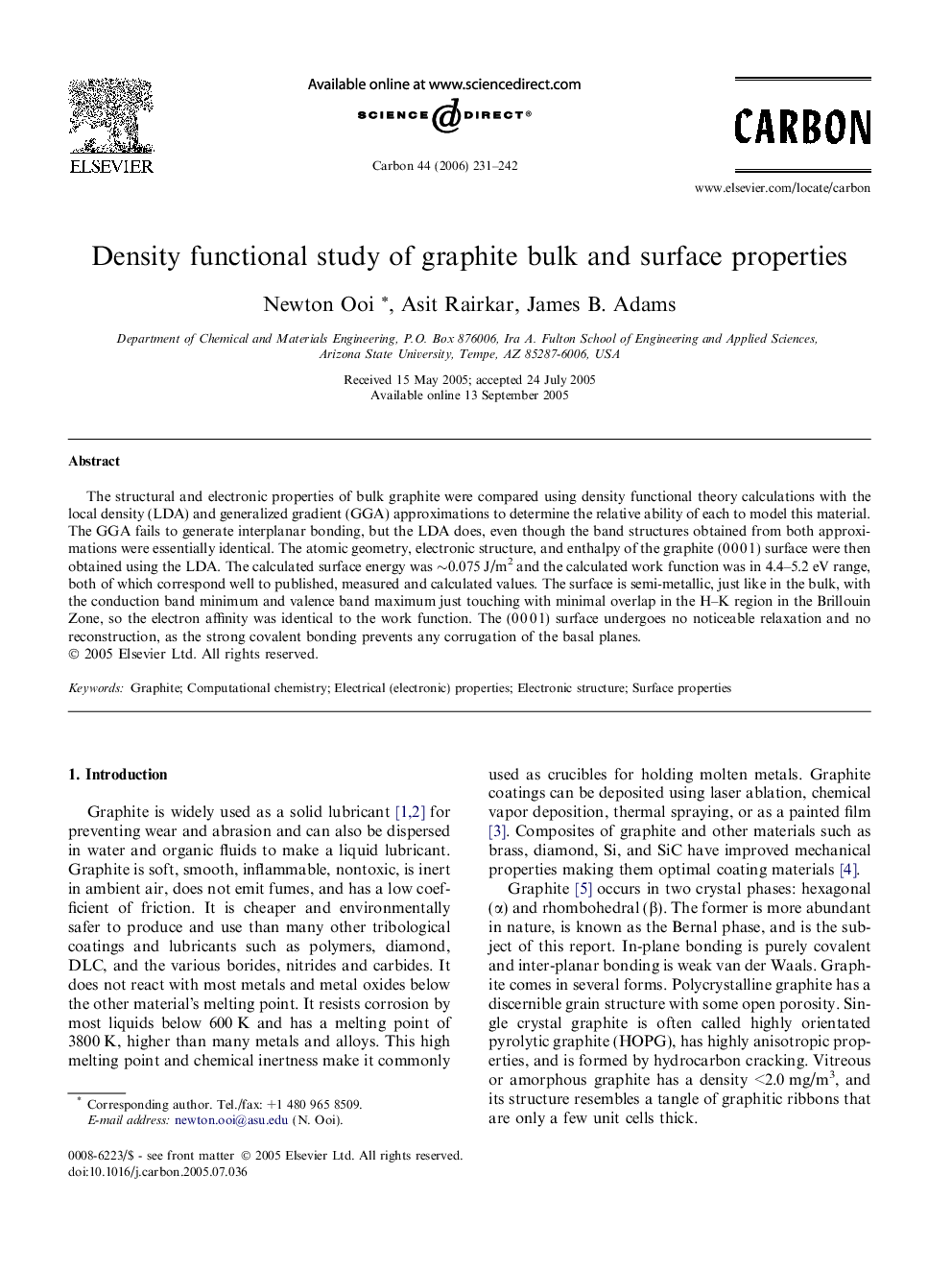| Article ID | Journal | Published Year | Pages | File Type |
|---|---|---|---|---|
| 1420021 | Carbon | 2006 | 12 Pages |
The structural and electronic properties of bulk graphite were compared using density functional theory calculations with the local density (LDA) and generalized gradient (GGA) approximations to determine the relative ability of each to model this material. The GGA fails to generate interplanar bonding, but the LDA does, even though the band structures obtained from both approximations were essentially identical. The atomic geometry, electronic structure, and enthalpy of the graphite (0 0 0 1) surface were then obtained using the LDA. The calculated surface energy was ∼0.075 J/m2 and the calculated work function was in 4.4–5.2 eV range, both of which correspond well to published, measured and calculated values. The surface is semi-metallic, just like in the bulk, with the conduction band minimum and valence band maximum just touching with minimal overlap in the H–K region in the Brillouin Zone, so the electron affinity was identical to the work function. The (0 0 0 1) surface undergoes no noticeable relaxation and no reconstruction, as the strong covalent bonding prevents any corrugation of the basal planes.
